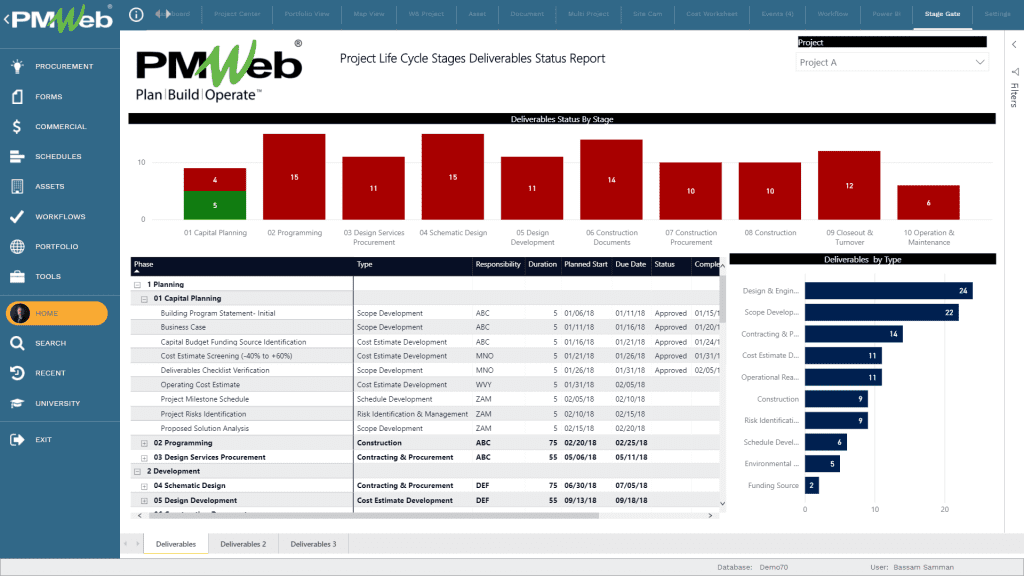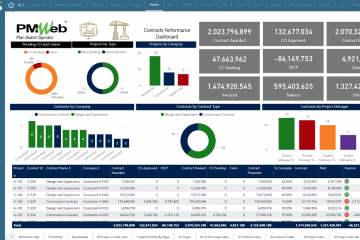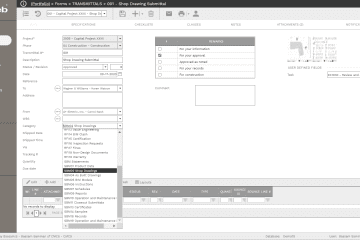The Kingdom of Saudi Arabia Vision 2030 expresses the country’s long-term goals and expectations and it is built upon the country’s unique strengths and capabilities. Vision 2030 which was published in April 2016, guides the country’s aspirations towards a new phase of development – to create a vibrant society in which all Saudi Arabia citizens can fulfill their dreams, hopes, and ambitions to succeed in a thriving economy.
The Vision 2030 had three themes, a vibrant society, a thriving economy, and an ambitious nation. The vision had 96 strategic objectives for which 13 Vision Realization Programs were established to achieve those objectives. Those programs include housing program, financial sector development, quality of life, national transformation, fiscal balance, public investment fund, national companies’ promotion, privatization, national industrial development and logistics, strategic partnership, Hajj and Umrah, human capital development, and national character enrichment.
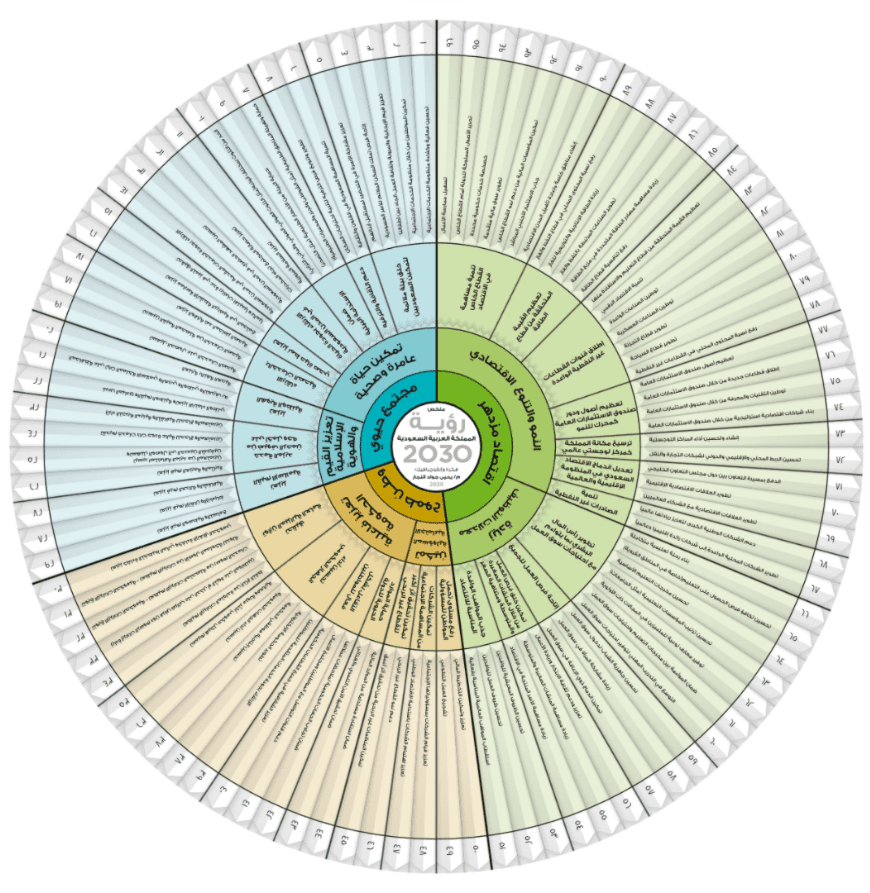
One of the key outcomes of Vision 2030 is that it will drive construction growth directly and indirectly over the next 10 years through its multi-faceted approach to economic and social development. Already a number of mega capital construction programs had been released. Those include Neom, Amaala, Red Sea Project, Qiddiya, Diriyah Gate Development, King Salman Park, Sport Boulevard, Al Ula Development, National Housing Program, Green Riyadh among many others. Developing these programs will entail extensive construction of roads, railways, ports, airports, power plants, factories, mines, hotels, entertainment facilities, parks and supporting infrastructure.
To ensure that the undertaken capital construction projects are aligned with Saudi Arabia Vision 2030 objectives, there should be a formal review and approval of the anticipated benefits from investing in those projects. The review and formal process should start at the very early stage of the project’s assessment and approval and should continue throughout the project’s execution and even the results during the asset’s operation until the end of 2030. Nevertheless, the objective of the benefit realization assessment during the capital construction project execution is not to measure the outcome but to ensure that what is being built will achieve the planned outcomes by aligning those strategic benefit outcomes with the project’s outcomes.
For example, to achieve the strategic objective measure “To increase our capacity to welcome Umrah visitors from 8 million to 30 million every year”, there will be a need to build new airports, refurbish and expand existing airports, build new hotels, improve the transportation infrastructure among many other capital construction projects and non-construction projects investments. Those projects will result in a growing airport’s traveler capacity, hotel rooms, restaurant seats, hospital beds, people-movement volume among others. Therefore, capital construction projects’ selection and ongoing approval to continue should be aligned with achieving the anticipated outcomes.
Unlike the traditional practice of assessing the benefits realization outcomes on a quarterly or semi-annually basis, the benefit realization assessment for capital construction projects should be aligned by the project’s stage gates. Those would include for example the stages of planning, tender for design, design development, tender for construction, construction, testing and commissioning, and project closeout and turnover. The approval to exit a stage will depend on the approval status of planned stage deliverables including the benefit realization assessment.
Using a Project Management Information System (PMIS) like PMWeb, the project stage gates and the deliverables within each stage will be defined, managed, and reported on. PMWeb stage module will be used to define those stage gates which could be standard for all capital construction projects or could differ by project type. Each stage gate will be linked to its relevant project schedule activity to ensure alignment between the project’s master plan and stage gates. In addition, each stage gate will be assigned a Gatekeeper who will be responsible for ensuring that the stage gate is complete and ready to exit. There is no limit to the number of user-defined fields that can be added to each stage gate to better manage and report the status of project stage gates.
In addition, the planned deliverables for each stage gate needs to be added to the stage gate. For each deliverable, PMWeb allows capturing the details of the deliverables as well as the project team member responsible for the deliverable, relevant Work Breakdown Structure (WBS) level, relevant project schedule activity, deliverable due date, deliverable done date, deliverable start and finish dates among others.
For deliverables that are created using a PMWeb process, whether it was a default process or process created using custom form builder, PMWeb allows linking the deliverable to its project management or contract management process source. For example, the project baseline budget needs to be linked to the relevant transaction in the PMWeb budget module. This will allow us to automatically update the fields for status, revision, and workflow steps in the stage-gate module.
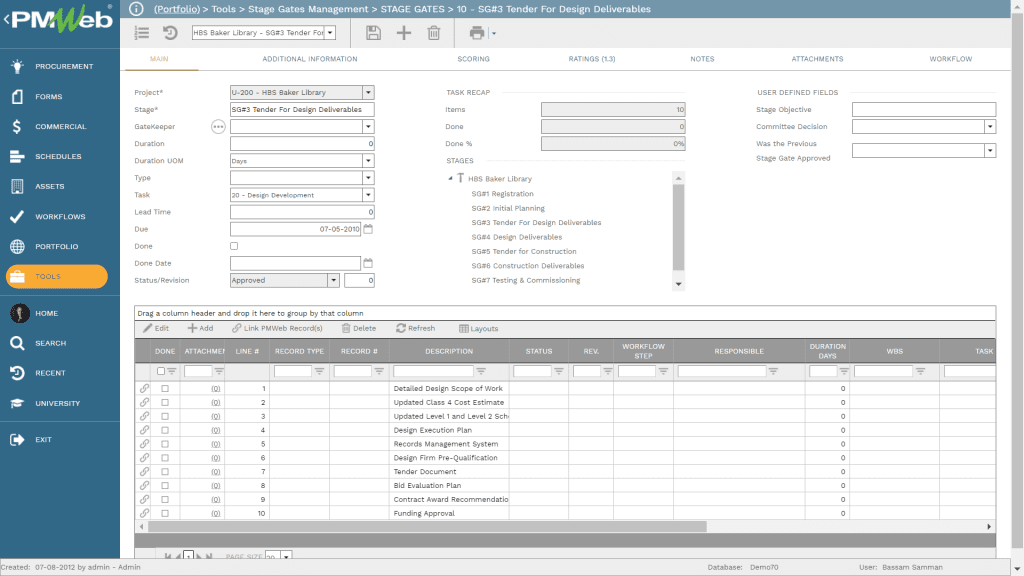
For deliverables that are output documents whether created using a PMWeb process or any other third-party application, those will be uploaded and stored in the PMWeb document management repository and then attached to its relevant deliverable record.
It is highly recommended that the PMWeb document management system folder structure be aligned with the project stage gates. This will enable uploading and storing documents associated with deliverables for each stage gate in a separate folder for which each can be assigned with the needed access permission rights to limit access to those folders and subfolders to only authorized project team members. In addition, project team members can subscribe to any or all stage-gate folders so they can receive online or email notifications when new documents or document revisions are uploaded or downloaded.
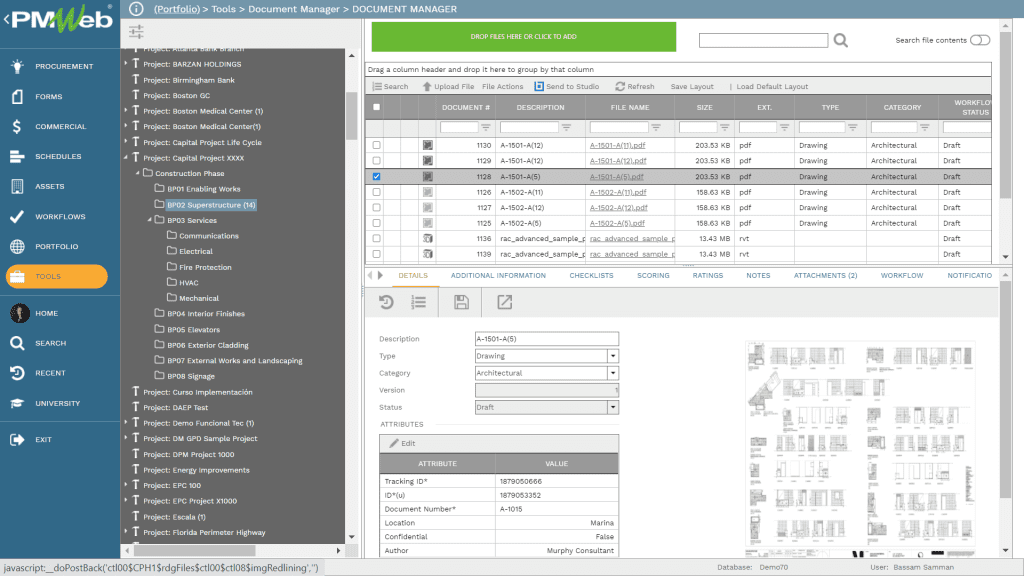
One of the key deliverables for each stage gate will be the Benefit Realization Assessment process. This process will be created using the PMWeb custom form builder module. The layout and content of the Benefit Realization Assessment including the language used in the form will largely depend on the organization’s Project Management Office (PMO) requirements. For example, the PMO can select the option to create a standard Benefit Realization Assessment form to be used across all projects’ portfolio or have a unique form for each project type as the strategic objectives and measure will differ. Nevertheless, there should be a certain level of standardization to enable aggregating and reporting on the strategic measures across the complete projects’ portfolio.
In general, the form will include a table listing the strategic measures that the execution of the capital construction project will contribute to. For example, the number of hospital beds, the number of hotel rooms, the number of students attending schools, the traveler capacity among others. In addition, and similar to all other PMWeb processes, all supportive documents will be attached to the form as well as links to relevant records, websites, imported MS Outlook emails will be added.
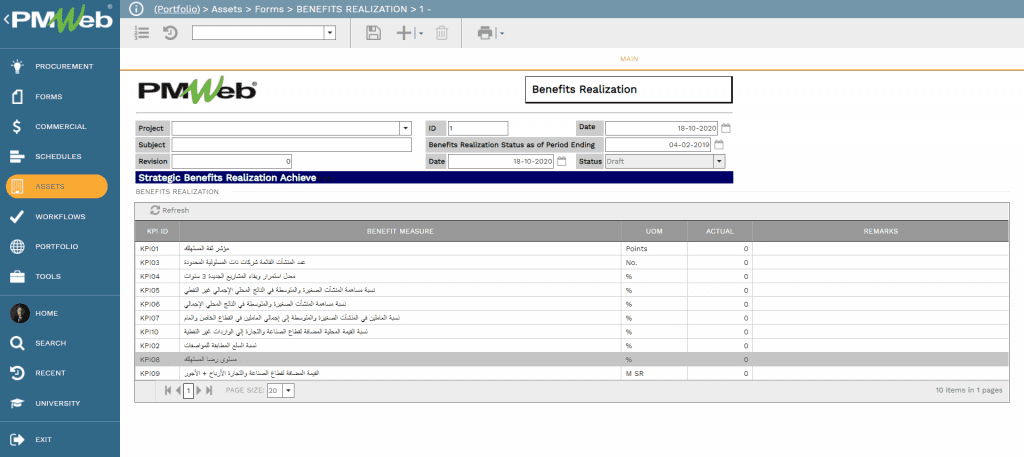
A workflow will be assigned to the Benefit Realization form to ensure that the reported results are formally reviewed and approved and thus establish the needed accountability and transparency. The workflow will identify the sequence of tasks that are needed to submit, review and approve the Benefit Realization process. Those tasks will be assigned to their responsible project team members in accordance with the project’s responsibility assignment matrix (RAM) as well as the set authority approval levels.
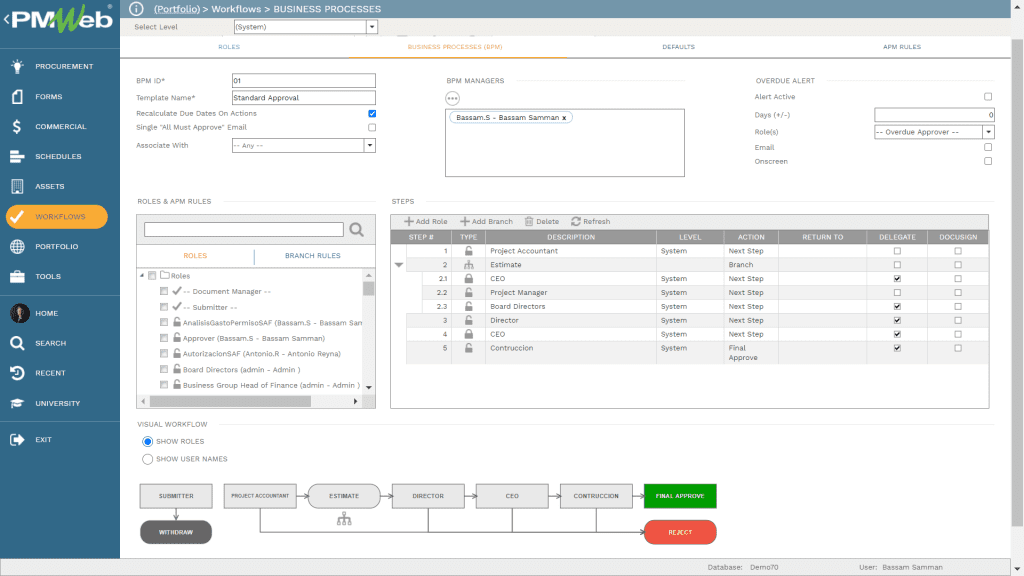
When all deliverables for a stage gate are completed and formally reviewed and approved, the process for reviewing and approving the stage-gate exit can proceed. To ensure that the review and approval process is objective and not biased, a predefined list of scoring items will be used. Those items will be predefined by the organization’s Project Management Office (PMO) using the PMWeb scoring module and for which each will have a scoring weight. The scoring list can be expanded to provide the required level of project governance.

In addition, PMWeb allows adding subjective rating each stage gate. This rating is usually provided by executive project stakeholders based on their own personal input. Each subjective rating will be based on a scale of five points for which the stakeholder can select from. It is also highly recommended to request each stakeholder to provide a note explaining the reason for the given rating. The Gatekeeper can select which given ratings to be selected and which to be ignored. This will automatically calculate the average rating points.

When the scoring is completed, the stage gate will be submitted for review and approval using the assigned workflow tasks. This will provide project stakeholders and the Project Management Office (PMO) will real-time, single-version-of-the-truth monitoring, evaluating, and reporting of the project’s stage-gate status. The report can be designed in the desired layout and format to share the needed information.
In addition, the report reader can drill down to any specific stage-gate deliverable including the Benefits Realization deliverable. This will enable the report reader to review if the strategic measures associated with the project are still valid and aligned with the required strategic measures.
